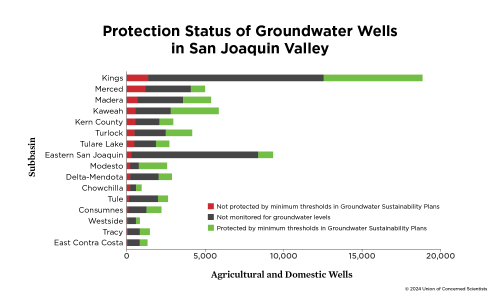The geographic ranges of most plant and animal species are limited by climatic factors, including temperature, precipitation, soil moisture, humidity, and wind. Any shift in the magnitude or variability of these factors in a given location will impact the organisms living there. Species sensitive to temperature may respond to a warmer climate by moving to cooler locations at higher latitudes or elevations. Although the response to warming is generally understood, it is difficult to predict how concurrent changes in other climatic factors also affect species distributions. Despite the uncertainties, ecological models predict that the distribution of world biomes will shift as a result of the climate changes associated with increased greenhouse gases (IPCC, 1998). The distribution and size of the populations of plants and animals within those biomes will also change, with potential consequences for the functioning of ecosystems and for humans who are dependent on many ecosystem goods and services.
Global biome models have been used to evaluate the changes in vegetation distribution likely to occur with a changing climate. The models generally predict a poleward shift of the northern hemisphere taiga, boreal conifer, and temperate mixed forests belts (IPCC, 1998, Appendix C). One limitation of the global models is that the output represents a vegetation distribution that is in equilibrium with climate, a condition that is unlikely to occur in the next century. The spread of tree species involves several factors, including dispersal, regeneration on a suitable site, maturation, and seed production. If climate changes faster than trees can disperse to new, more suitable areas, the composition of the forest may change and the survival of some species could be at risk. Global-scale models are also inadequate to evaluate the indirect effects of climate, such as disturbances from pests, disease, fire, flooding, and wind damage.
Many animals are able to respond to climate at a faster rate than plants. For those animals that do not migrate, a distribution change in response to a warming trend would occur at the population level as a result of changes in the ratios of extinctions to colonizations at the northern and southern boundaries of the range. A northward range shift would thus be reflected in either a net extinction at the southern boundary or a net colonization at the northern boundary. Range shifts in areas with regional warming trends have been reported in alpine plants (Grabherr et al., 1994), butterflies (Parmesan, 1996; Parmesan et al., 1999), birds (Thomas and Lennon, 1999), marine invertebrates (Barry et al., 1995), and mosquitoes (Epstein et al, 1998). Two of those studies (Thomas and Lennon, 1999; Parmesan et al., 1999) evaluated changes at both southern and northern margins. In a sample of 35 European non-migratory butterfly species, 63% had ranges that shifted to the north by 35-240 km during the past century, and only 3% shifted to the south (Parmesan et al., 1999). The range shift parallels a 0.8°C warming over Europe during the last century, which has shifted the climatic isotherms northwards by an average of 120 km (Beniston et al., 1998).
Factors other than climate may limit the extent to which organisms can shift their ranges. Physical barriers such as mountain ranges or extensive human settlement may prevent some species from shifting to more suitable habitat. In the case of isolated mountain top species, there may be no new habitat at higher elevation to colonize. Even in cases where no barriers are present, other limiting factors such as nutrient or food availability, soil type, and the presence of adequate breeding sites may prevent a range shift. Although tree line will probably increase in elevation as climate warms, for example, soils at higher elevations are often thin and of poor quality and could be inadequate to sustain species from lower elevation sites. In coastal areas, the loss of wetlands and beaches due to sea level rise could destroy sites used by turtles, birds, and marine mammals for breeding and raising young. It should be noted that given all these potential difficulties, it is encouraging that a few species have apparently been able to shift their ranges in response to climate, as described in the studies listed above. However, the long-term impacts of these shifts on the populations and species as a whole, and the extent to which other species can adapt to changing climate, are difficult to assess at this time.
References
Barry, J., C. Baxter, R. Sagarin, and S. Gilman, 1995. Climate related, long-term faunal changes in a Californian rocky intertidal community. Science 267, 672-675.
Beniston, M. and R.S.J. Tol, 1998. Europe. In The Regional Impacts of Climate Change: An Assessment of Vulnerability, 149-185, (Eds RT Watson, MC Zinyowera, RH Moss), Cambridge University Press, Cambridge, UK.
Epstein, P., H. Diaz, S. Elias, G. Grabherr, N. Graham, W. Martens, E.M. Thompson, and J. Susskind, 1998. Biological and physical signs of climate change: focus on mosquito borne diseases. Bulletin of the American Meteorological Society 79, 409-417.
Grabherr, G., M. Gottfried, and H. Pauli, 1994. Climate effects on mountain plants. Nature 369, 448.
IPCC, 1998. The Regional Impacts of Climate Change: An Assessment of Vulnerability, (Eds RT Watson, MC Zinyowera, RH Moss), Cambridge University Press, Cambridge, UK.
Parmesan, C., 1996. Climate and species range. Nature 382, 765-766
Parmesan, C., et al. 1999. Poleward shifts in geographical ranges of butterfly species associated with regional warming. Nature 399, 579-583.
Thomas, C.D. and Lennon, J.J., 1999. Birds extend their ranges northwards. Nature 399: 213.
Additional Resources
EPA Plant and Animal Impacts Bibliography This site offers an extensive listing of scientific articles about the impacts of climate change on wildlife. http://www.epa.gov/globalwarming/impacts/imp_blio.html
World Wildlife Fund Climate Change Campaign This site is a gateway to several WWF online reports on the impacts of climate change on wildlife and protected areas. http://www.panda.org/climate/impact.shtml



